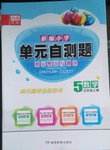题目内容
阅读理解
To tell you the truth, I' m not interested in owning a cellular (网络)phone except for use in an emergency (紧急情况), for ordinary cellular phone service is very expensive. How would I get help if I were in trouble or in danger? A good friend told about a product she though would settle my problem. It' s the SOS phone----a cellular phone service designed for emergency use.
With the touch of a button (键), the SOS phone will connect me to a roadside emergency service, a 911 service or a trained SOS operator, 24 hours a day. If I ever need help, I know it' a just a phone call away. By pressing the “Tow” button, I'll be connected with my emergency roadside service provider (提供者). Or, if I don' t have one, the SOS operator can suggest one to me and get in touch with them immediately.
The“911”button will connect me to 911 emergency service ID my area----best of all, the call is completely free!
If I just want to call hone to tell my husband and children something necessary I can. By pressing the “Call”button. I'll reach an operator. When I ask the operator to call home. I'll be connected automatically(自动地). And because the Call Center has my 10 most-used phone number, I don't even have to recite the number.
Unlike ordinary cellular phone plans, the SOS phone doesn't have any minimum usage requirements (最低底价)or other promises that could change the price I expect to pay each month.
(1)The writer enjoys using the SOS phone because________.
[ ]
A.she is always in trouble or in danger
B.she thinks the cost of its service is reasonable
C.she needn't pay for any emergency service
D.the ordinary cellular phone can not be used in an emergency
(2)When you have an SOS phone, ________.
[ ]
A.you will get help whenever you are in an emergency
B.you will be safe wherever you are
C.you can be connected with anyone
D.you can get service from any cellular phones
(3)When you want to call home, ________.
[ ]
A.you will have to tell the operator your home phone number
B.the operator will suggest one phone number to you
C.the Call Center will pass on your words to your family
D.you'll be connected with your family with the help of an operator
(4)The writer wants to ________.
[ ]
A.tell us her experience
B.let us know she has a SOS phone
C.let us know something about the SOS phone
D.tell us she is very safe now

 优生乐园系列答案
优生乐园系列答案 新编小学单元自测题系列答案
新编小学单元自测题系列答案阅读理解
New York , May 25?
Millions of volunteers (志愿者)joined in a long chain spreading 4 125 miles across the world's richest nation Sunday and burst into songs , reaching the highest
development in the Hands Across America road to raise ![]() 50 million for the nation's homeless and hungry.
50 million for the nation's homeless and hungry.
The chain began with a 6-year-old homeless girl named Amy in New York's Buttery Park. It spread across 16 states and Washington, D.C. where it crossed the White House to the Queen Mary's port in California. The last people in the line were Bill and Mary Jones and their five small children, who lived in a family shelter (收容所) for the homeless in Venice, California.
The chain was not unbroken some gaps were planned for safety, others opened where there were not enough people to cover the ground. But along most of the route, the healthy joined the sick, beautiful film stars , homeless beggars , wealthy artists , poor children and President and Mrs Regan all took places in the long line.
1.What is the main idea of the passage?
[ ]
A.Millions of volunteers support the poor.
B.The longest line is waiting for support.
C.The homeless and poor need help.
D.The richest nation faces the problem.
2.The underlined word “raise” in the first paragraph means _______.
[ ]
|
A.try to lift |
B.manage to collect |
|
C.bring up |
D.join up |
3.From the article, we know that the volunteers were made up of ________.
[ ]
A.both the homeless and the poor
B.the government officials, including President Regan
C.people in every field
D.people of 16 states except Amy
4.What do you think of the people in the chain spreading 4 125 miles?
[ ]
|
A.They were hand in hand. |
B.They were in good order. |
|
C.They were troublesome. |
D.They were planned for safety. |
5.Although the United States is a developed country, ________.
[ ]
A.there is still a rebellion sometimes.
B.there is still many people waiting for jobs
C.there are still some family shelters
D.there are still many social problems to be solved.
阅读理解
New York , May 25?
Millions of volunteers (志愿者)joined in a long chain spreading 4 125 miles across the world's richest nation Sunday and burst into songs , reaching the highest
development in the Hands Across America road to raise ![]() 50 million for the nation's homeless and hungry.
50 million for the nation's homeless and hungry.
The chain began with a 6-year-old homeless girl named Amy in New York's Buttery Park. It spread across 16 states and Washington, D.C. where it crossed the White House to the Queen Mary's port in California. The last people in the line were Bill and Mary Jones and their five small children, who lived in a family shelter (收容所) for the homeless in Venice, California.
The chain was not unbroken some gaps were planned for safety, others opened where there were not enough people to cover the ground. But along most of the route, the healthy joined the sick, beautiful film stars , homeless beggars , wealthy artists , poor children and President and Mrs Regan all took places in the long line.
1.What is the main idea of the passage?
[ ]
A.Millions of volunteers support the poor.
B.The longest line is waiting for support.
C.The homeless and poor need help.
D.The richest nation faces the problem.
2.The underlined word “raise” in the first paragraph means _______.
[ ]
|
A.try to lift |
B.manage to collect |
|
C.bring up |
D.join up |
3.From the article, we know that the volunteers were made up of ________.
[ ]
A.both the homeless and the poor
B.the government officials, including President Regan
C.people in every field
D.people of 16 states except Amy
4.What do you think of the people in the chain spreading 4 125 miles?
[ ]
|
A.They were hand in hand. |
B.They were in good order. |
|
C.They were troublesome. |
D.They were planned for safety. |
5.Although the United States is a developed country, ________.
[ ]
A.there is still a rebellion sometimes.
B.there is still many people waiting for jobs
C.there are still some family shelters
D.there are still many social problems to be solved.
| |||||||||||||||||||||||||||||||||||||||||||||
| |||||||||||||||||||||||||||||||||||||||||||||||||||||||||||